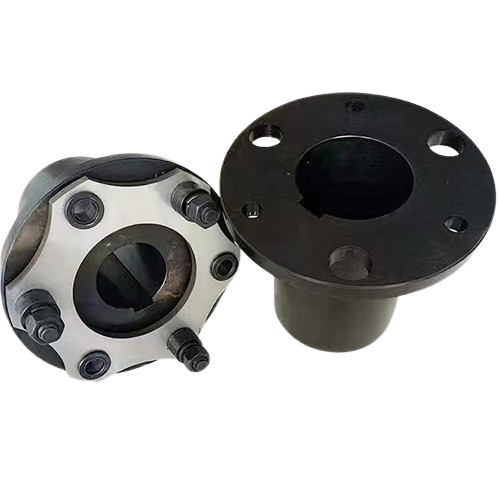
Diaphragm coupling is a type of coupling that consists of several sets of diaphragms connected to two halves of the coupling in a staggered manner with bolts. Each set of diaphragms is composed of several stacked pieces. The diaphragm coupling relies on the elastic deformation of the diaphragm to compensate for the relative displacement of the two connected axes, and is a stable metal strong component flexible coupling
The diaphragm coupling can compensate for axial, radial, and angular deviations caused by manufacturing errors, installation errors, load deformation, and temperature rise changes between the active and passive machines. Lingsi diaphragm coupling belongs to the metal elastic element flexible coupling, which relies on the metal coupling diaphragm to connect the main and secondary motors to transmit torque. It has the advantages of elastic vibration reduction, no noise, and no need for lubrication
Characteristics of diaphragm couplings
1. It has a good ability to compensate for the misalignment of two axes. Compared with gear couplings, the angular displacement can be twice as large. When radial displacement occurs, the reaction force is small and the flexibility is large, allowing for certain axial, radial, and angular displacements.
2. It has obvious shock absorption effect, no noise, and no wear3. Adapt to working in high temperatures and harsh environments, and be able to operate safely under conditions of impact and vibration4. Simple structure, light weight, small volume, and convenient installation and disassembly. No need to move the machine for assembly and disassembly, no need for lubrication. And it can accurately transmit the speed, operate without slip, and can be used for fine mechanical transmissionDiaphragm couplings are widely used in the shaft transmission of various mechanical devices, such as water pumps (especially high-power and chemical pumps), fans, compressors, hydraulic machinery, petroleum machinery, printing machinery, textile machinery, chemical machinery, mining machinery, metallurgical machinery, aviation (helicopters), and high-speed power transmission systems of ships. After dynamic balancing, they have been widely used in high-speed transmission shaft systems
Correct selection of diaphragm coupling:
1. The diaphragm coupling is composed of at least one diaphragm and two shaft sleeves. The diaphragm is fastened to the shaft sleeve with a pin, which generally does not loosen or cause backlash between the diaphragm and the shaft sleeve. Some manufacturers offer two diaphragms, while others offer three diaphragms with one or two rigid components in the middle, and both sides are connected to the shaft sleeve.
2. The characteristic of diaphragm coupling is somewhat similar to that of bellows coupling. In fact, the way the coupling transmits torque is similar. The diaphragm itself is very thin, so it is easy to bend when relative displacement loads are generated. Therefore, it can withstand up to 1.5 degrees of deviation and generate lower bearing loads in the servo system.
3. Diaphragm couplings are commonly used in servo systems. Membranes have good torque rigidity, but are slightly inferior to bellows couplings.
4. Choosing the appropriate coupling is a crucial step in making good use of the coupling, and in the design phase, it is necessary to consider what type of coupling to choose
5. On the other hand, the diaphragm coupling is very delicate. If it is misused or not correctly installed in use, it is easy to be damaged. Therefore, it is very necessary to protect the deviation within the bearing range of the normal operation of the coupling





